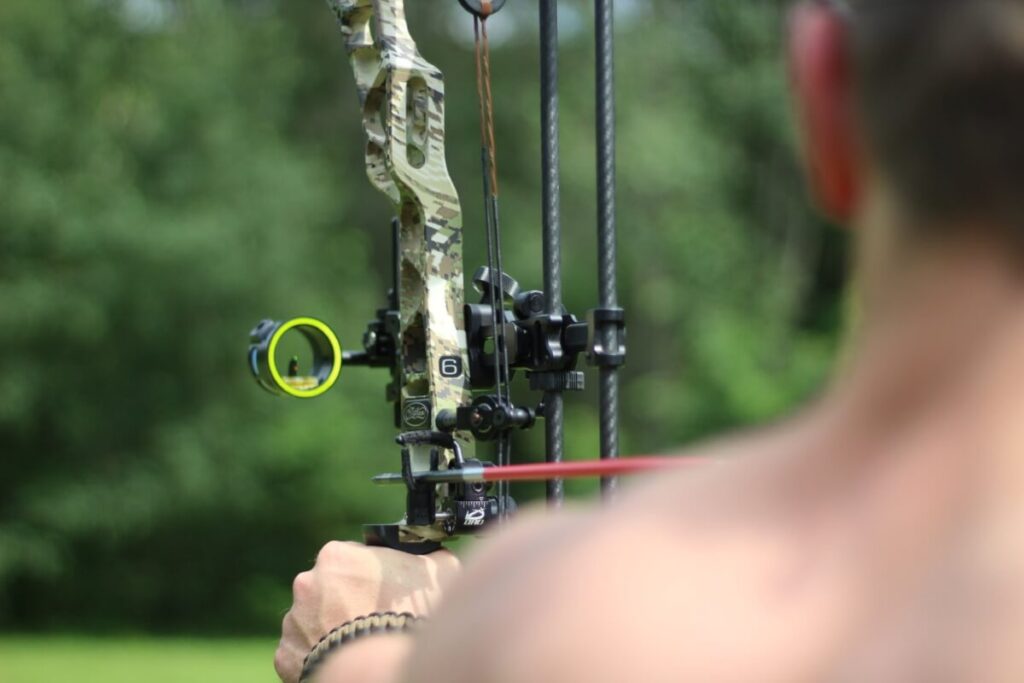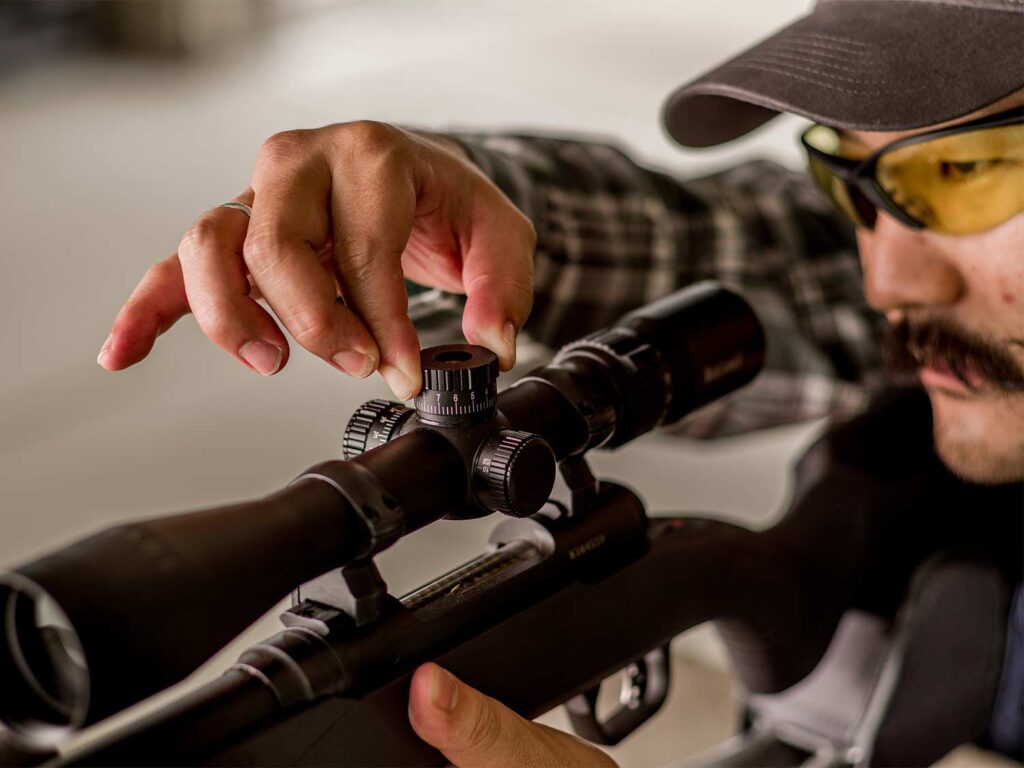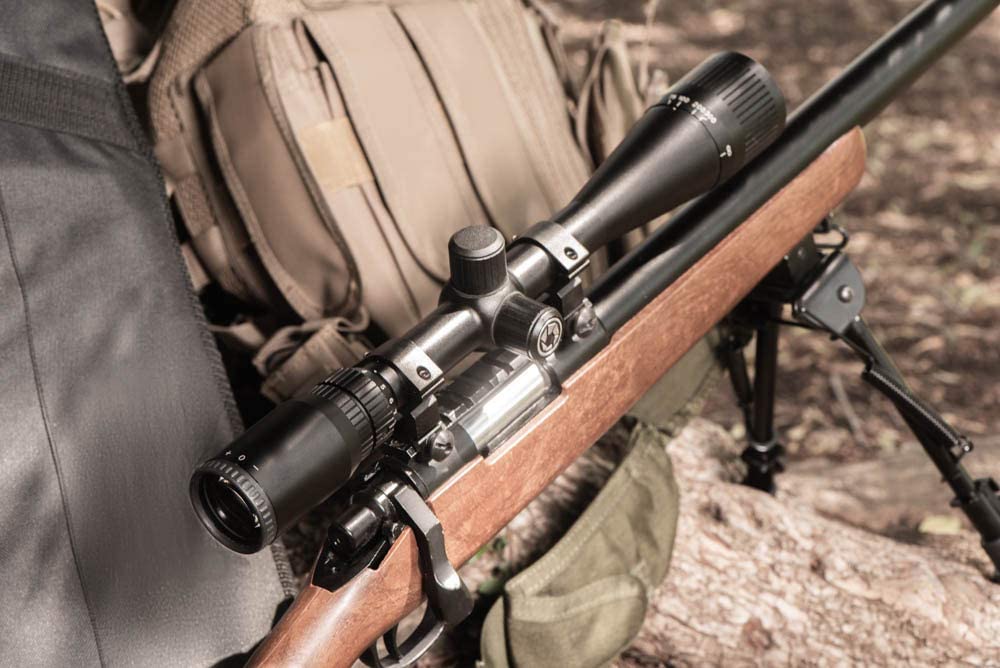

A scope is an essential part of rifles. But not all rifles come with one. Most rifles have inbuilt provision for attaching a scope to them, while others would require some improvisation.
Choosing the appropriate scope for your rifle is something that must be looked into. In this article, we will provide you with adequate information on all you need to know as regards rifle scopes and the factors to consider when choosing a scope. But most importantly, you will learn how to use a scope. We would carefully take you through the process step by step.
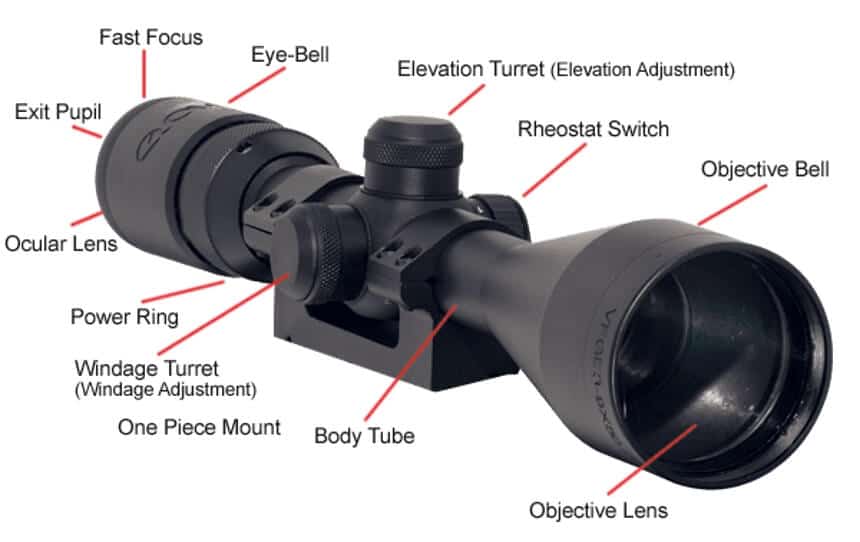
This is also known as the tube. It is the diameter of the rifle scope. The body comes in different sizes; however, 1 inch ( or 30mmm) are the common ones.
These are kinds on the rifle scope to adjust the focus or settings. These knobs come in various forms and are used mostly to make changes to the elevation and windage.
As the name implies, it refers to the vertical motion of the path the bullet will take to hit the target. Vertical motion is upwards and downwards.
This functions just like the elevation but in a horizontal motion. It is the left and right motion of the bullet path to the target.
The reticle is used to approximate the point where the bullet will land. The reticle comes in various styles depending on the rifle scopes. Some of the styles include:
Also, some reticles are more sophisticated and so use batteries or ambient light.
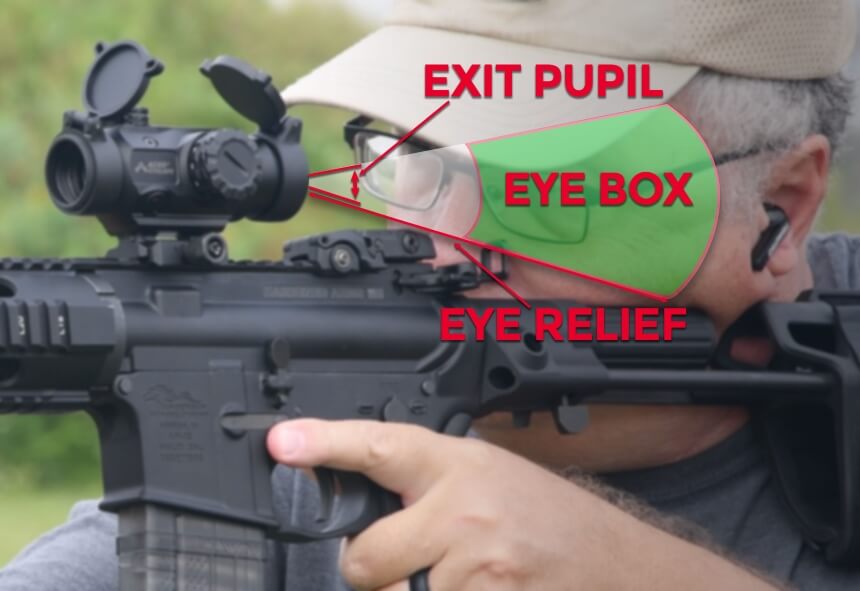
Eye relief is very important because it protects the eye from being hit by the scope when the trigger is pulled.
There are two types of eye relief:
Sites or Iron sites are the two metal indicators mounted on the shaft of the rifle to provide a path for estimating the path the bullet will travel. However, sites for not aid accuracy or flexible adjustment.
Parallax refers to the optical difference between the view on the scope and the reticle. The Parallax helps to bring the reticle to an optical focus on the target. This feature does not come with every rifle scope.
This feature is not found in all rifle scopes. Riflescopes that have this feature are seated with round rings to keep the scope waterproof. Some are classified as fog proof. This means that they are filled with nitrogen. Riflescopes with both features are reliable in all weather conditions.
Power simply refers to the magnification of the scope. Magnification refers to the number of times the view of the target can be enlarged through the scope. The magnification can range from times 4 to times 32 (x4 – x32). This means that the target can be enlarged 4 times to 32 times its original size.
An optical coating is a special coating given to lenses to help the shooter’s eye adjust to the brightness and contrast. Not all rifle scopes have these coatings. Optical coatings can be described as:
The sole purpose of a rifle scope is to allow shooters to pay attention to the details surrounding their target region. The scope ensures precise and accurate information to the shooter as regards the target and the surrounding.
As an intending shooter, you must know how the scope works to enjoy its benefits. Mounting your scope to the rifle is the first thing a shooter should do.
After mounting the scope to the rifle, the next step is to “zero in”. This simply means to make adjustments to the scope until it provides you with precise and accurate information. Key points like the caliber, weight, and velocity of the bullet can also help in zeroing in.
Also, some environmental factors affect your degree of alignment, and they include:
The difference between the ground temperature and air temperature can be used to calculate the bullet lift and (or) drop.
In addition, light transmission is important and has a great role in any rifle scope. Light travels differently in rifle scopes. This largely depends on the type of scope you have.
In the dark or low light, visibility may be difficult. You may not be able to see your target. However, there are sophisticated scopes that have advanced light transmissions that enable you to see your target in the dark.
Finally, the reticle of the riflescope is placed on the potential target at your zero distance. The reticle is located in front of the focal plane of the scope. Placing the reticle on the potential target correctly guarantees precise targeting. The riflescope is now ready to provide accurate guidance in achieving precise targeting.
In the event that you do not have a rifle scope and want to purchase one, the rule is that it should cost half the price of the rifle.
If you need a reliable rifle scope for your hunting, check the Vortex Optics Crossfire II. There are plenty of handgun scopes, too. For instance, the Burris 2-7x32mm model is an excellent choice.
Now that you know the basics of how the scope works, a little addition is that you should note that bullets do not travel in a straight motion. They travel in a curved line. So when targeting, point your rifle a bit upwards. This requires precise calculation so that you can take advantage of your scope.
With that said, let’s give you the full guideline on how to use a scope.
To achieve this, you have to use a stable platform. A sandbag or a commercial rifle rest are great options for this. Sandbags are cheap; however commercial rifle rest are better. Opting for the commercial rifle rest will incur more expenses.
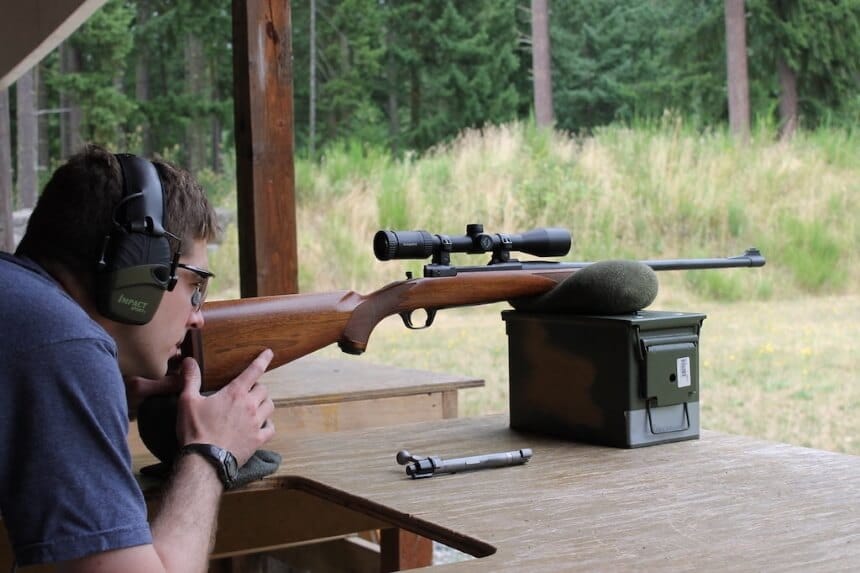
The range is always between 25 and 50 yards using a large paper as a target. After this, pick a good rest position and make sure that you are at ease by spreading out to prevent human error. Once you’re comfortable with your position, start adjusting the scope.
The Boresighting process can be achieved by either using:
Once you are done with boresighting, the next step is to start shooting. Stop right there! We know what you are thinking. You are not yet ready to start shooting because there are a lot of things to be done. First, when preparing to shoot or hunt, as the case may be, ensure you get the same kind of rifle that you are accustomed to.
This is essential because there are different designs and styles of rifle scopes that come with various strange parts that you may not be familiar with. This is the reason we advise that you pick a rifle scope you are familiar with.
Also, note that the shooting range is within 25 yards. You can go for longer ranges once you fine-tune the range (25 yards). It is easier to start with a shorter shooting range till you master it. This is because longer ranges (50 to 100 yards) would leave you frustrated and discouraged.
At 25 yards, you can get a large paper and target it at that range. As mentioned earlier, we recommend that you use a sandbag of good quality. Also, avoid support from your muscles. It can drastically reduce accuracy.
Moving the crosshair allows the scope to be aligned with the target. You need to place the crosshair at the top dead center. After which, you zero the rifle at the short distance of 25 yards. We advise that you try up to 100 yards or more to boost consistency.
The rings of the lenses need to be set properly by placing them in the right place and tightening it. This ensures that the target is appropriately set. By so doing, the erector tube becomes mobile in the scopes. Proper tightening so prevents jumping when the rifle recoils. However, extremely tightening can crush the erector spring.
Initially, we advised that you do not increase the trial more than the previously said range. 25 yards. At this stage, you are permitted to set your rifle scope beyond 25 yards. You can now go as far as 200 yards if you are up to the task.
However, to shoot at a distance that big, we advise that you use the bull’s eye approach. The bull’s eye approach measures the distance from your group’s center. For this approach, you need to note that force clicks translate to 100 yards. So if you are shooting at a range of 200 yards, then you need exactly two clicks (1/4 MOA scope).
In addition, you need to ensure that the zeroing is at the range of 100 yards. Shooting within a short range of 100 yards is very easy and hardly gives anyone a hard time. It is, however, essential to note that shooting at a higher range of 200 yards, for example, is different. This is because the rifle and the cartridge behave differently. That’s why we advise that you should not go beyond 100 yards at the beginning.
Testing if the adjustment you have made so far is close enough to meet your target is vital. To achieve this, you can aim at a target close to you. 100 yards, for example. To ensure accuracy, remove human error. Make yourself sit in a stable and comfortable way. Once this is done, you are free to open fire at your target.
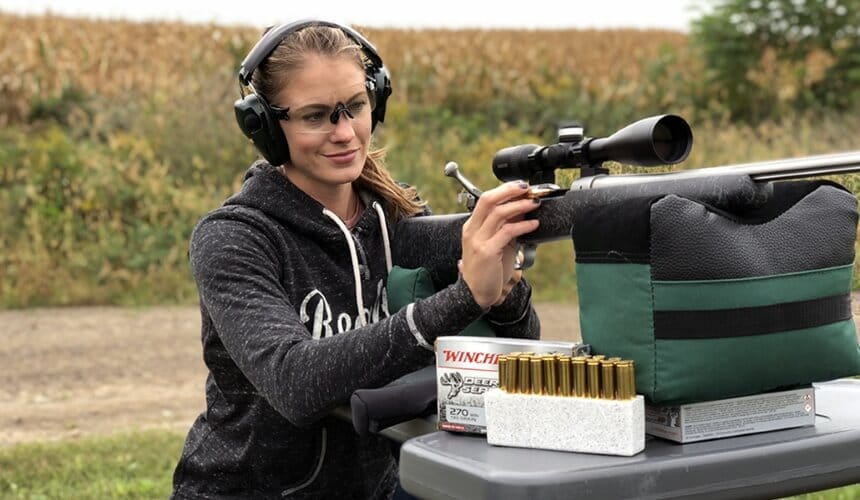 Laws Guiding the Use of Rifles
Laws Guiding the Use of RiflesAcquiring firearms can pose a danger or is a potential threat to people around as it can cause injuries or death. We advise that rifles and scopes should only be used by well-educated potential shooters Trusted Source Gun laws in the US: seven things you need to know about the data | US gun control | The Guardian Weapons laws can vary dramatically from state to state. Here are the key findings we collected while building our interactive www.theguardian.com . You are responsible for safe handling of firearms.
It is expedient that all laws, be it local, national, or international, be followed while shooting Trusted Source Gun laws in the US, state by state – interactive | US news | theguardian.com President Obama has indicated a move towards strengthening federal gun control measures, but the majority of gun legislation in the US is enacted at the state level www.theguardian.com .
Laws are subject to change, so ensure that you are updated with the current laws, restrictions, and guidelines applicable to your area, state, and country.
Lenses are a fragile part of the rifle scope. This is because it can be ruined easily by scratches or abrasions. Always cover your lenses when you are not using the scope to avoid damaging them.
Riflescope lenses can be replaced once damaged. FirearmsFirearms and sporting stores have lenses for replacement. You can purchase them there and also get sleeves to protect the whole scope as it is subject to damage as well.
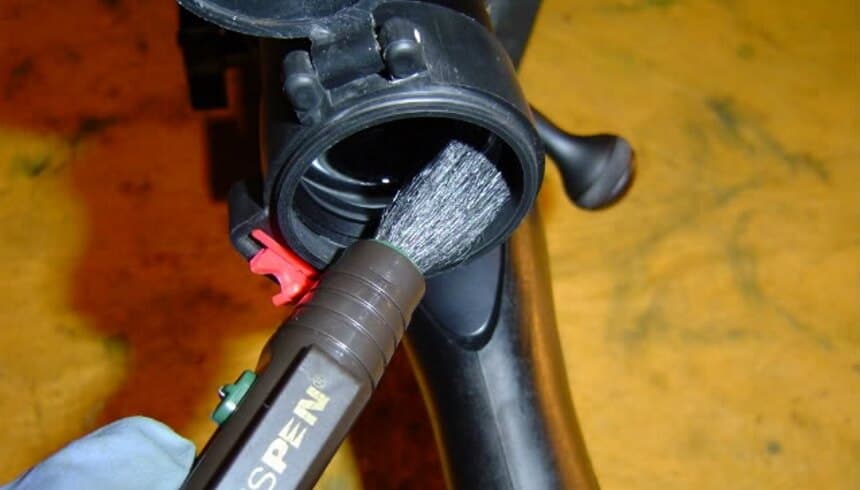
Lens brushes have incredibly soft bristles that are manufactured specifically not to cause damage while cleaning the lens of your rifle scope. Optics wipes made for eyeglasses can also be used to clean the lens of your rifle scope. Aside from optics wipes, you can use anti-fogging optical wipes as well.
In addition, lens cleaning fluid can also be used to remove smudges that are stuck on your lens. These cleaning materials can be purchased from firearms or sporting stores.
Extreme temperature can affect the internal lubrication of your scope. We advise that you avoid storing the rifle scope in hot places or under direct sunlight. Riflescopes are internally lubricated by the manufacturers hence do not need internal maintenance.
Exposing your rifle scope to sunlight damages the lubricant and the scope as a whole. You cannot replace a lubricant that has been cooked by sunlight. The magnification of the objective lens in the riflescope can burn inside the riflescope on exposure to direct sunlight.
Cleaning your rifle scope is as important as cleaning every other part of the rifle scope. All riflescopes are sealed. Hence, no need for internal maintenance. A soft dry cloth can be used to wipe away fingerprints, smudges, dust particles, or sediments.
When cleaning your rifle scope, be careful not to change the windage and elevation settings. Also, do not immerse your rifle scope in water to clean it. If you do so, you will damage the rifle scope.
Now that you have learned how to use a scope, we are positive that you would pick up that rifle and get the right accessory for it. Riflescopes have numerous advantages as it makes shooting very easy.
It does not matter if you are using the rifle for shooting as a sport or for hunting. They help aid the vision of the shooter. With consistent practice, you will get accustomed to how it works and its effectiveness.
